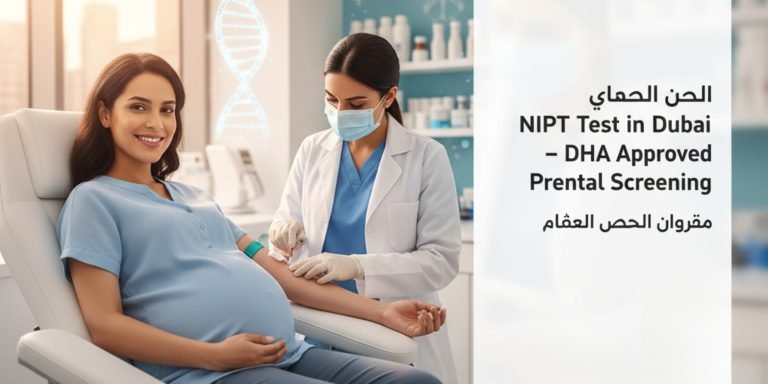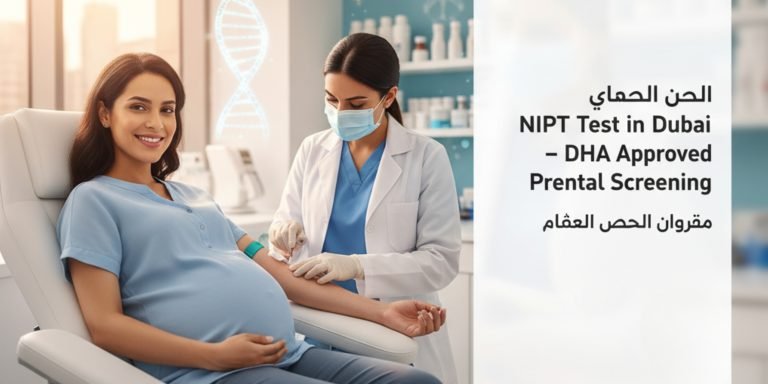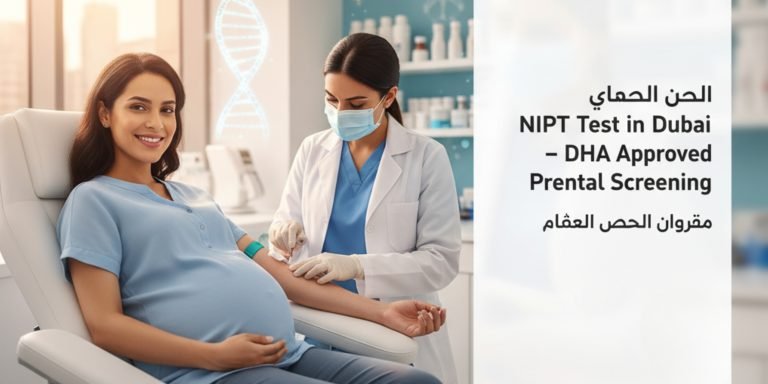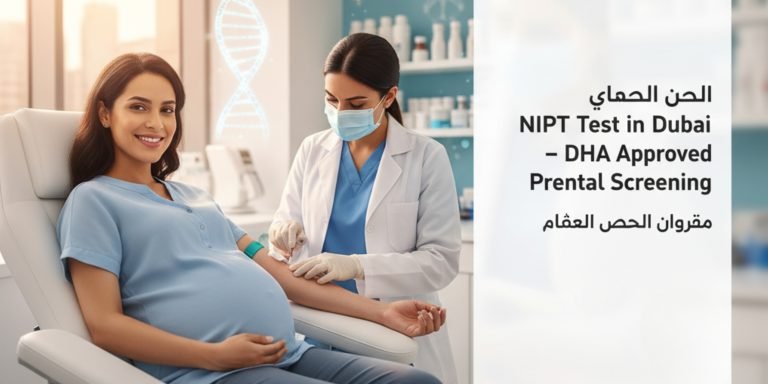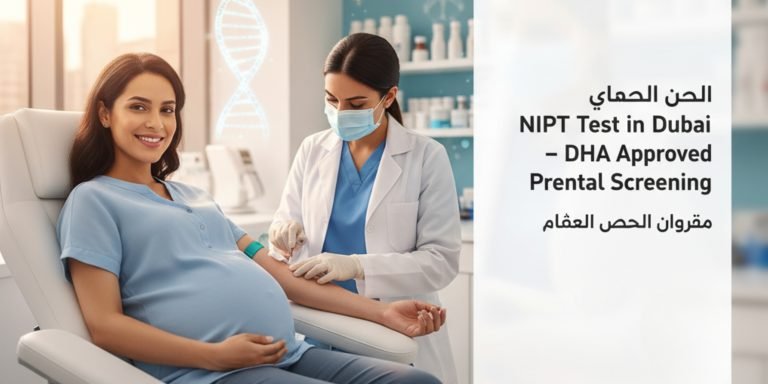Understanding NIPT: Are There Risks for Expectant Mothers?

Understanding the Limitations of NIPT: What Every Expectant Mother Should Know About Risks and Accuracy
Expectant mothers often face critical decisions about prenatal screening, and Non-Invasive Prenatal Testing (NIPT) has surged in popularity by offering early risk assessment for chromosomal conditions with over 99% sensitivity for Down syndrome.
American College of Obstetricians and Gynecologists (ACOG), Committee on Genetics, Noninvasive Prenatal Testing for Fetal Aneuploidy (2016, reaffirmed 2020)
Yet this powerful screening tool carries limitations—from variable accuracy across conditions to possible false positives and negatives—that every pregnant woman should understand before interpreting results or opting for further testing. In this article, you will learn:
- What NIPT is and how it differs from diagnostic tests
- How sensitivity, specificity and predictive values define reliability
- Key factors behind false positive and false negative findings
- Recommended next steps, including confirmatory procedures and genetic counseling
- Ethical, emotional and practical considerations for informed choice
By exploring each aspect in depth, you can weigh the benefits and risks of undergoing the NIPT test with clarity and confidence.
👉 Discover the benefits of NIPT compared to traditional genetic testing
What Is NIPT and How Does It Differ from Diagnostic Tests?
Non-Invasive Prenatal Testing (NIPT) is a blood-based screening test that analyzes cell-free fetal DNA fragments in maternal circulation to estimate the risk of chromosomal abnormalities. Unlike invasive diagnostic procedures, it poses no miscarriage risk and can be performed as early as ten weeks of gestation. Understanding this distinction helps expectant mothers balance the ease of screening against the definitive certainty of diagnostic tests.
Before exploring accuracy metrics, it helps to see exactly which conditions NIPT can detect and why it remains classified as a screening tool.
What Conditions Does NIPT Screen For?
NIPT screens for the most common aneuploidies and sex chromosome variations by measuring proportional DNA fragments.
- Trisomy 21 (Down syndrome)
- Trisomy 18 (Edwards syndrome)
- Trisomy 13 (Patau syndrome)
- Monosomy X and sex chromosome aneuploidies (e.g., Turner syndrome)
- Select microdeletions (varies by provider)
These targets allow early risk estimation but do not cover all chromosomal or genetic disorders, which is why diagnostic confirmation may be necessary for definitive answers.
Transitioning from the list of screened conditions, we now examine how NIPT collects and analyzes fetal DNA.
How Is NIPT Performed and What Is Cell-Free DNA Screening?
NIPT is performed by drawing a maternal blood sample and isolating cell-free DNA fragments, a combination of maternal and placental (fetal) DNA. Laboratory sequencing or targeted assays quantify chromosomal over- or under-representation. This non-invasive process offers rapid turnaround and minimal discomfort, supporting widespread adoption for early prenatal risk assessment.
This sampling technique underpins why NIPT remains a screening test rather than a diagnostic test requiring invasive sampling.
Why Is NIPT Considered a Screening Test, Not a Diagnostic Test?
Screening tests estimate the probability of a condition, whereas diagnostic tests confirm its presence. NIPT yields a risk score—high-risk or low-risk—based on statistical thresholds rather than a definitive diagnosis. Positive screening results require invasive follow-up (amniocentesis or CVS) to confirm fetal karyotype, ensuring that medical decisions rest on definitive genetic evidence.
With this foundational understanding of NIPT’s role, we can now evaluate how accurate those risk scores truly are.
How Accurate Is NIPT? Understanding Sensitivity, Specificity, and Predictive Values

Sensitivity and specificity measure a test’s ability to identify true positives and true negatives. Positive predictive value (PPV) and negative predictive value (NPV) gauge the real-world probability that a high-risk or low-risk result reflects the fetus’s actual chromosomal status. These four metrics together determine how much confidence expectant mothers can place in NIPT findings.
What Are Sensitivity and Specificity in NIPT?
Sensitivity is the percentage of affected pregnancies correctly flagged as high-risk; specificity is the percentage of unaffected pregnancies correctly identified as low-risk. High sensitivity (>99% for Trisomy 21) reduces missed cases, while high specificity (>99%) limits false alarms.
Dondalski, A. J., et al., Noninvasive Prenatal Screening: A Review of Current Practices and Future Directions (2021)
These metrics form the backbone of any screening test’s reliability.
Moving from these definitions, we’ll see how predictive values translate into real-world result interpretation.
How Do Positive and Negative Predictive Values Affect NIPT Results?
Positive predictive value (PPV) indicates the chance that a high-risk result truly reflects an affected fetus; negative predictive value (NPV) shows the probability that a low-risk result is accurate. In high-risk populations, PPV for Trisomy 21 can exceed 95%, but in average-risk pregnancies it may drop to 70–80%. NPV remains above 99% across most groups, offering strong reassurance when results are low-risk.
To appreciate these shifts, compare accuracy for common versus rare conditions.
How Does Accuracy Vary for Common vs. Rare Conditions?
| Condition | Sensitivity | Specificity |
|---|---|---|
| Trisomy 21 (Down) | >99% | >99% |
| Trisomy 18 (Edwards) | 97–99% | 97–99% |
| Trisomy 13 (Patau) | 91–95% | 95–99% |
| Rare microdeletions | 60–85% | 90–95% |
Lower sensitivity and specificity for rare conditions mean higher rates of false positives and false negatives, underscoring the importance of confirmatory testing for atypical results.
Next, we explore biological and technical factors that influence these accuracy metrics.
What Factors Influence NIPT Accuracy?
A range of variables can alter screening performance:
- Fetal fraction – the percentage of fetal DNA in maternal blood; low fetal fraction (<4%) increases test failure or error rates
- Maternal factors – obesity, malignancy or recent transfusions can skew DNA proportions
- Gestational age – very early testing may yield insufficient fetal DNA
- Laboratory methods – sequencing depth and platform can vary
- Biological variables – placental mosaicism or vanishing twin phenomena
Understanding these influencers helps expectant mothers interpret results with a realistic lens before moving on to false results exploration.
What Causes False Positive NIPT Results? Exploring Key Factors
A false positive occurs when NIPT indicates high risk but the fetus is unaffected. Common causes include placental DNA differences, residual twin DNA, maternal DNA anomalies and limitations in detecting rare chromosomal changes. Identifying these factors reduces anxiety and guides appropriate follow-up.
How Does Confined Placental Mosaicism Lead to False Positives?
Confined placental mosaicism (CPM) arises when the placenta contains chromosomal abnormalities absent in the fetus. DNA fragments from abnormal placental cells can trigger a high-risk NIPT result despite a healthy fetus. This mechanism explains up to 1–2% of false positives, especially for trisomies.
This placental discrepancy contrasts with the impact of vanishing twin scenarios on NIPT accuracy.
What Is the Impact of Vanishing Twin Syndrome on NIPT Results?
When a twin embryo demises early in pregnancy, residual DNA from the vanished twin may persist in maternal blood. That extra DNA can mimic aneuploidy signals, inflating the apparent risk and resulting in a false positive. Recognizing a vanishing twin history is crucial before interpreting NIPT findings.
Beyond placental and twin factors, maternal health conditions can also skew results.
How Do Maternal Conditions Like Malignancy and IVF Affect False Positives?
Cell-free DNA from maternal tumors or chromosomal mosaicism can be misread as fetal anomalies, leading to false positives. Similarly, in vitro fertilization (IVF) pregnancies may involve embryo manipulation or mosaic embryos that influence DNA profiles. These maternal contributions highlight why pre-test counseling should include maternal medical history.
Why Are False Positives More Common in Rare Conditions and Microdeletions?
Lower prevalence of microdeletions and rare aneuploidies reduces PPV, so even a small background error rate yields more false positives. When screening for a condition that occurs in fewer than 1 in 5,000 pregnancies, a positive result has a much higher chance of being incorrect. Confirmatory diagnostics remain essential for rare findings.
Having covered false positives, we now turn to false negatives and their underlying causes.
What Are the Causes and Risks of False Negative NIPT Results?
A false negative means NIPT fails to flag an affected fetus. Although rare for common trisomies, false negatives can occur and carry significant risks if no further testing is pursued.
How Does Low Fetal Fraction Affect NIPT Reliability?
Low fetal fraction reduces the test’s ability to detect aneuploidy signals, increasing the chance of missed abnormalities. Factors such as early gestational age, high maternal body mass index or certain medical conditions can lower fetal fraction. Repeat sampling or alternative screening methods may be recommended when fetal fraction falls below acceptable thresholds.
What Role Does Fetal Mosaicism Play in False Negatives?
Fetal mosaicism—when only a subset of fetal cells carry a chromosomal abnormality—may evade detection if abnormal cells contribute minimally to the placental DNA pool. In such cases, NIPT may report low-risk despite true mosaicism in fetal tissues, leading to a false negative. Diagnostic testing remains the gold standard for definitive assessment.
What Technical Limitations Contribute to False Negative Results?
Sequencing depth, assay design and bioinformatics thresholds can all limit detection sensitivity. Some platforms may not target specific microdeletions or low-level mosaic variants. Laboratories set risk thresholds to balance false positives and negatives, but inherent test constraints mean a small percentage of affected pregnancies will slip through screening.
With potential pitfalls in mind, it is essential to know how to interpret NIPT results and plan next steps.
How Should Expectant Mothers Interpret NIPT Results and What Are the Next Steps?
Interpreting a “high-risk” or “low-risk” outcome requires context, professional guidance and often confirmatory testing. Timely genetic counseling ensures that mothers understand what each result means and what options lie ahead.
What Does a High-Risk or Positive NIPT Result Mean?
A high-risk designation indicates an elevated probability of a chromosomal abnormality but is not a diagnosis. It reflects statistical risk based on DNA ratios and must be confirmed by invasive diagnostic procedures. Understanding PPV in your specific risk group helps frame the real likelihood of an affected fetus.
This leads to the question of when to proceed with diagnostic tests like amniocentesis or CVS.
When Are Diagnostic Tests Like Amniocentesis or CVS Recommended?
- Chorionic Villus Sampling (CVS): Performed at 10–13 weeks by sampling placental tissue.
- Amniocentesis: Performed after 15 weeks by sampling amniotic fluid.
Both tests offer definitive karyotyping with over 99% accuracy, guiding medical management and family decision-making.
Why Is Genetic Counseling Important After Receiving NIPT Results?
Genetic counselors translate complex risk metrics into clear, personalized information, discuss potential outcomes, and support shared decision-making. Counseling sessions help expectant mothers prepare emotionally and understand medical, ethical and familial implications of test results.
National Society of Genetic Counselors, Practice Guidelines for Genetic Counseling (2023)
If invasive testing is declined or inconclusive, retesting and monitoring options remain available.
What Are the Options for Retesting or Further Evaluation?
- Repeat NIPT after several weeks to increase fetal fraction
- Enhanced ultrasound for structural markers
- Alternative maternal serum screening for broader risk assessment
These pathways allow ongoing monitoring while minimizing invasive interventions.
What Ethical and Emotional Considerations Should Expectant Mothers Know About NIPT?

Undergoing prenatal screening touches on autonomy, consent and psychological well-being. Understanding emotional impacts and societal debates empowers mothers to make choices aligned with personal values and cultural beliefs.
Why Is Informed Consent Crucial Before Undergoing NIPT?
Informed consent ensures that expectant mothers understand the screening’s scope, limitations, possible outcomes and follow-up requirements. Comprehensive pre-test counseling discusses test accuracy, potential false results and implications for pregnancy management, safeguarding patient autonomy and trust.
How Can NIPT Results Affect Psychological Well-being?
Uncertain or unexpected results may trigger anxiety, guilt or decisional conflict. Clear communication, timely counseling and peer-support resources help manage stress, prevent isolation and promote resilience throughout the prenatal journey.
What Are the Societal and Disability Rights Implications of Prenatal Screening?
Screening programs raise questions about reproductive autonomy, potential for selective termination and societal attitudes toward disability. Engaging with disability rights perspectives, bioethics discussions and cultural contexts helps expectant mothers and caregivers consider the full impact of prenatal decision-making on families and communities.
How Can Expectant Mothers Make an Informed Choice About NIPT?
Empowered decisions stem from asking the right questions, weighing benefits against limitations and accessing trusted support resources. A structured approach ensures clarity and confidence.
What Questions Should You Ask Your Healthcare Provider About NIPT?
When discussing NIPT, consider asking:
- Which chromosomal abnormalities are included in this test?
- What are the test’s sensitivity and specificity for my risk group?
- How might my medical history affect results?
- What follow-up steps will be recommended for high-risk findings?
- Are there non-invasive alternatives or additional screenings?
How Do You Weigh the Benefits and Limitations of NIPT?
Evaluating NIPT involves balancing:
- Benefits – early risk detection, non-invasive sampling and high accuracy for common trisomies
- Limitations – screening status, false positive/negative potential, variable performance for rare conditions
- Personal factors – age, family history, tolerance for uncertainty and willingness to pursue confirmatory testing
This framework clarifies whether NIPT aligns with personal values and clinical needs.
What Resources Are Available for Support and Genetic Counseling?
Expectant mothers can access:
- Certified genetic counseling services through obstetric clinics
- Patient advocacy organizations for prenatal support
- Peer support groups (online and in-person)
- Educational materials from professional bodies such as ACOG and SMFM
Leveraging these resources ensures ongoing guidance and emotional support throughout the prenatal screening journey.
Expectant mothers benefit from understanding that NIPT provides valuable early risk assessment but remains a screening tool with variable accuracy. By recognizing factors that cause false results, knowing when to pursue diagnostic confirmation and engaging in informed consent and genetic counseling, women can navigate prenatal testing with clarity and confidence. Ultimately, combining accurate information, professional guidance and personal values empowers every expectant mother to make the choice about NIPT that best suits her needs and circumstances.
Ready to take the next step in your prenatal journey? Book your DHA-approved NIPT Test in Dubai with Lab Tests Dubai for safe, accurate, and fully confidential screening from as early as 10 weeks of pregnancy. Our licensed professionals provide home sample collection and expert genetic counseling to guide you every step of the way.
👉 Book Your NIPT Test in Dubai Today



